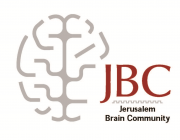
Dalit Sela-Donenfeld
A fundamental question in developmental neurobiology is how the relatively simple and uniform embryonic neural tube encrypts the potential to generate an astonishing variety of nerves, networks and functions in the adult brain. My lab focuses on the caudal part of the developing brain, the hindbrain, which is subdivided into rhombomeres early in development and gives rise later to the brainstem and cerebellum. Moreover, from the dorsal hindbrain, a unique population of neural crest cells detaches and migrates away to form the face and skull, sensory ganglia and the autonomic gut innervation. The hindbrain represents the key relay hub of the central nervous system linking the bilaterally symmetric half-sides of its lower (hindbrain, spinal) and upper (cerebellum, cerebral cortex) centers via an extensive network of neural pathways. Dedicated neural assemblies within the hindbrain proper similarly rely on these pathways, and control a vast array of vital functions, including the regulation of respiration, blood pressure, hearing, motor coordination, proprioception and more. Knowledge of the mechanisms that link early hindbrain patterning and neural crest migration with the assembly and integrity of accurately wired relay pathways and functions later in development, is essential but sparse. In my lab, we tackle these important questions from several developmental aspect using avian and mice model systems and advanced molecular and cellular methodologies. Our central goal is to unravel central genes that coordinate hindbrain patterning, neural crest migration, neuronal stem-cell differentiation and axonal navigation in order to develop proper neuronal centers and networks that act coherently to form a functioning brainstem.

